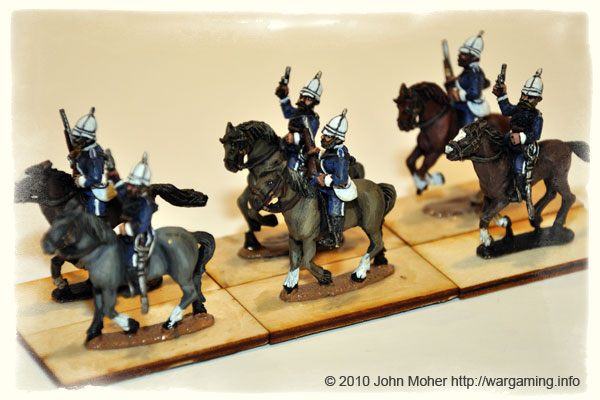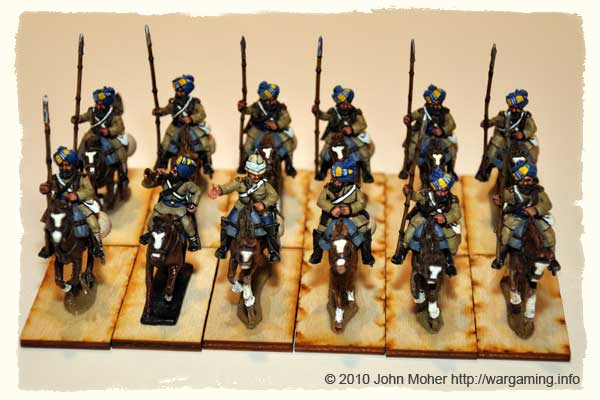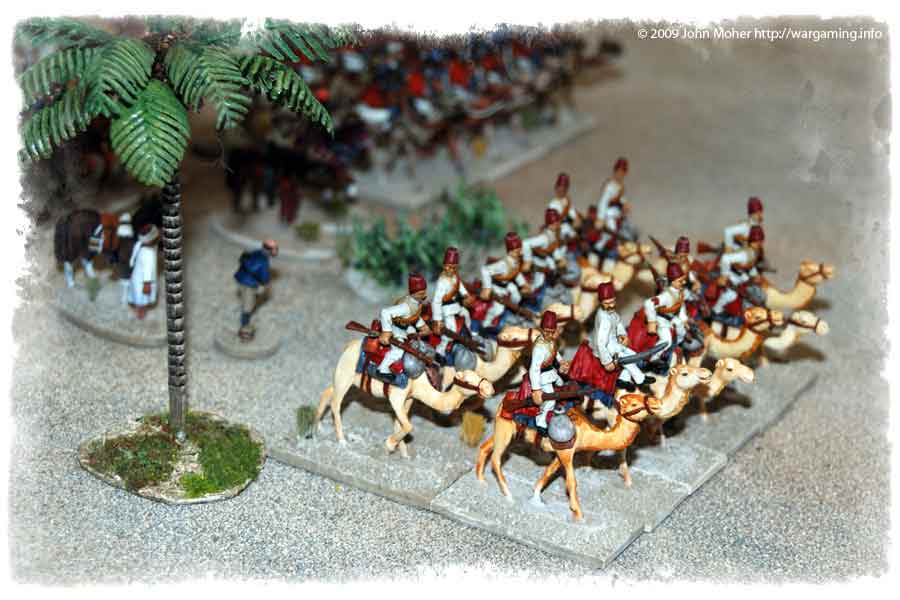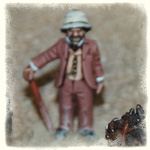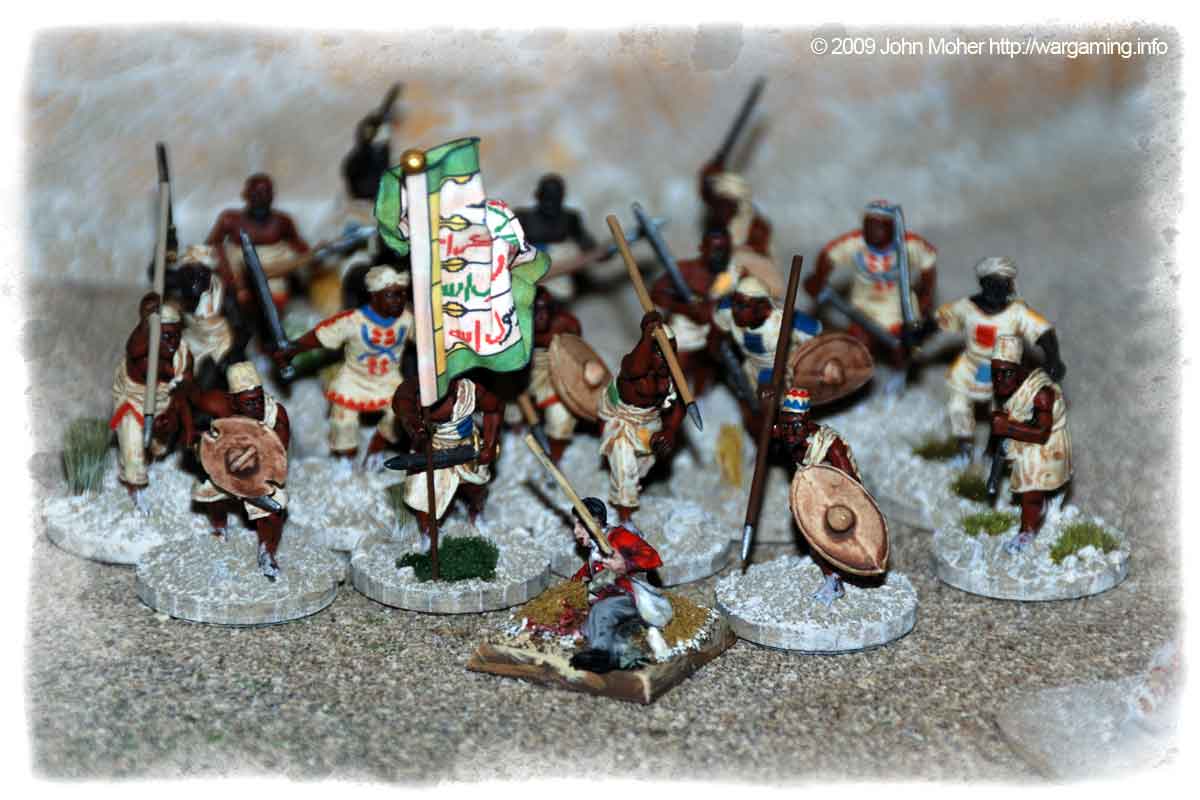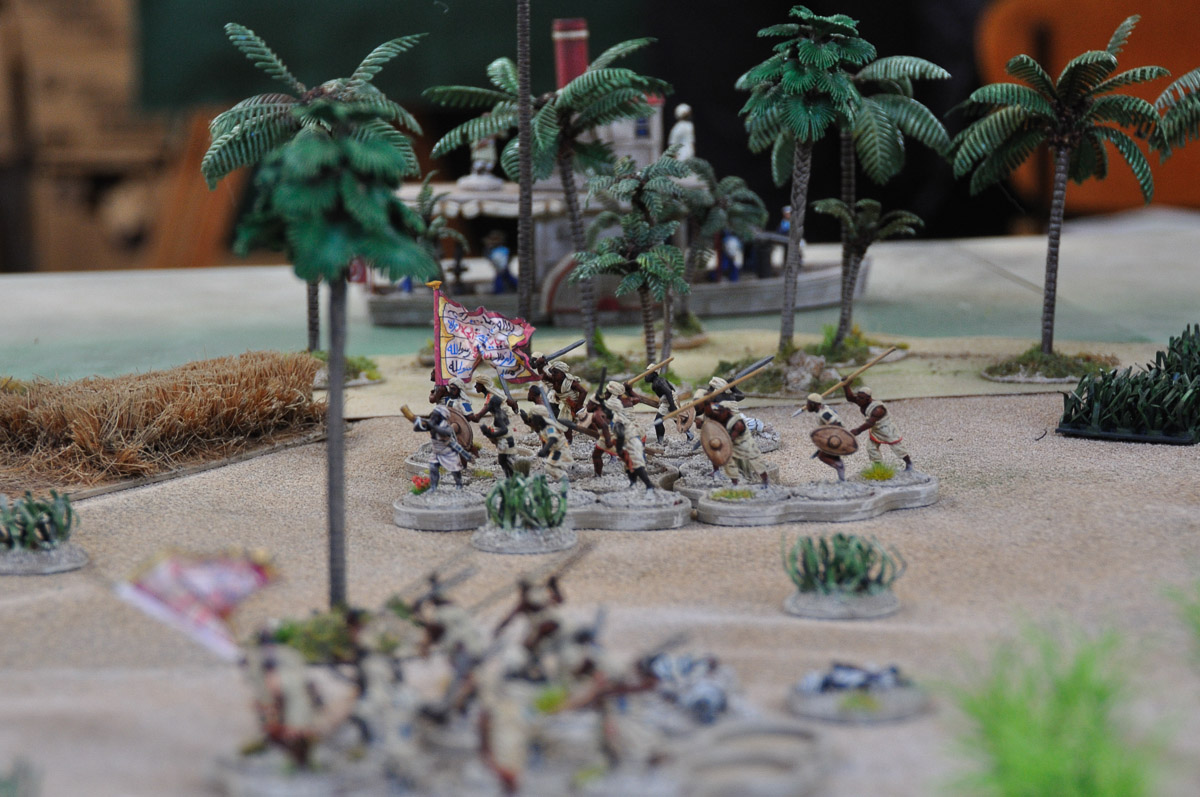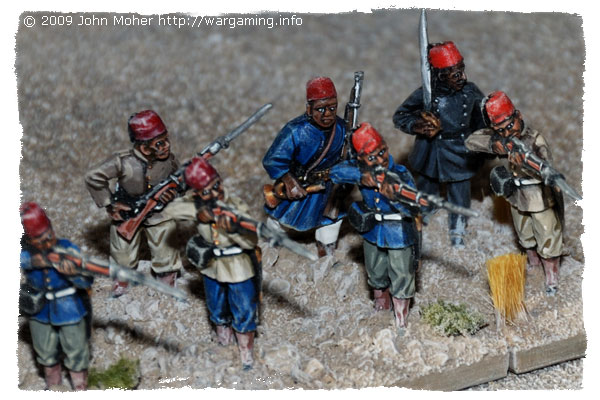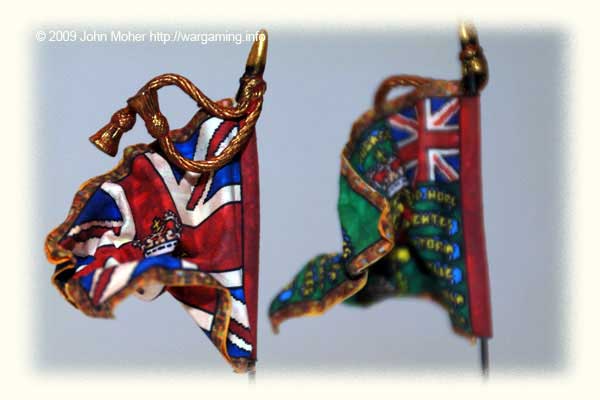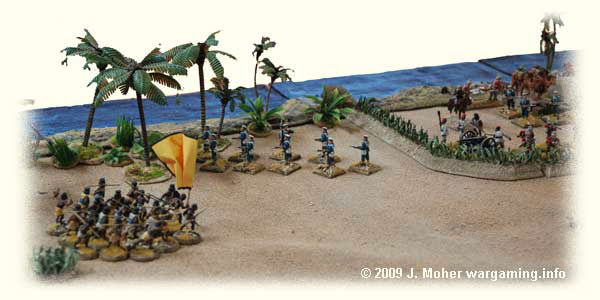As part of my Anglo-Zulu War forces I’m adding a small force of Natal Carbineers. The NC was a relatively small force – one of the smallest of the various para-military units in South Africa, numbering I believe just 60 at the time of the war in 1879 (with a total of 71 men serving during the course of the entire war). Of these at least 22 perished at Isandlwana (along with 26 Natal Mounted Police; and incidentally 2 NMP were also present at Rorke’s Drift – one of whom also perished, the other being wounded). The figures I chose are from the (classic) Wargames Foundry range, as these were the best figures I knew of at the time compatible with my existing Foundry, Perry, Castaway, and similar figs; and they can double as Natal Mounted Police at a pinch if needed… Continue reading “I say, it’s the Natal Carbineers!”
Tag: Victorian
Here come the Bengal Lancers
As my colonial forces expand to cover the NWF (North West Frontier) now the Sudan and Zulu Wars are well catered for I have endeavoured to make some units ‘multi-use’ (i.e. suitable for more than 1 campaign/theatre if possible). As such I am constructing 2 Squadrons (or TSATF ‘units’) of Bengal Lancers, one Sikh and one Muslim. Here are some photos of the completed figures so far, based, and just waiting for lance pennants and suitable texturing of their bases… Continue reading “Here come the Bengal Lancers”
The Relief of Old Dongola
It is early 1884 and the Mahdist Rebellion is reaching it’s peak – Gordon is isolated in Khartoum, and the rebellion has steadily spreads north towards the Egyptian frontier. As the debate about any relief expedition to go to Gordon’s aid is being discussed, news comes that a large number of European, Greek, and Egyptian Civilians, along with a small British Hospital Corps detachment, have been cut off in the town of Old Dongola; and the local Egyptian Commander has only a small force of Bashi-Bazouk Irregulars, supplemented by whatever Civilians that can fight, to try and defend the town (who’s defences are in a poor state due to official Khedival policy of not maintaining any permanent fortifications in the Sudan, the town having the partial remnants of a wall, supplemented by zeribas and improvised barricades)… Continue reading “The Relief of Old Dongola”
Graf von Schnyder
For my Colonial Games using TSATF I like to have a few ‘personality’ figures to add to the games or campaigns over and above the standard units and commanders. Graf von Schnyder is a German Adventurer and Big Game Hunter who has travelled to the southern-most reaches of the Sudan and beyond retracing Samuel Baker’s epic journey, in addition to visiting other parts of Africa and the Pacific. Independently wealthy Schnyder is on a self obsessed mission to become world famous ‘somehow’ with the currently popular ‘Geographic Society’ and earn his immortality!
Continue reading “Graf von Schnyder”Doctor Ernesto Furtwangler
For my Colonial Games using TSATF I like to have a few ‘personality’ figures to add to the games or campaigns over and above the standard units and commanders. An Austro-Hispanic Missionary & Doctor who has done charitable work in Khartoum and Kordofan and is well travelled (South America, India, China). Dr Furtwangler has travelled much of the world doing his missionary work for various Catholic Churches & Societies, and has learned several dialects.
Continue reading “Doctor Ernesto Furtwangler”Fire & Sword Battle 03: The Battle of Baqah al-Garbiyyah Oasis
As Sir Henry’s Column advanced South towards Akasha, he received word of a large Dervish Force from ostensibly friendly locals (but more likely disgruntled Mahdists with a score to settle against the Mahdist force’s commander). As this force was reported a few miles inland from the Nile, at a minor watering hole, Sir Henry felt obliged to turn and approach the Mahdist forces – he could ignore them, being but a day and half’s march from the town of Akasha, but that would allow them to remain behind him on his Lines of Communication, and potentially block reinforcements from reaching him. As a result he turned inland, and his plucky column headed into the desert…
Continue reading “Fire & Sword Battle 03: The Battle of Baqah al-Garbiyyah Oasis”Fire & Sword Turn 03: January 1884
After Turn 02: December 1883 the Anglo-Egyptians luck runs out – the revolt has spread into Western Sudan; Darfur & Kordofan are aflame with Mahdist support and Dara immediately falls to the rapidly growing Dervish Army in Darfur. Even worse El Fasher falls immediately after with the loss of it’s garrison. In Kordofan the expedition heading for El Obeid (2nd Company, XIIth Sudanese Battalion; and 1st Section, B Egyptian Artillery Battery) somehow survive the sudden onslaught, and are not perhaps fully aware of their precarious position.
Continue reading “Fire & Sword Turn 03: January 1884”The Egyptian Army: Sudanese Infantry
A Sudanese Infantry Company (the 1st as you can tell by the Blue Company Flag) – they mostly wear blue uniforms as per the Egyptian winter uniform (or perhaps they are from the XIIth Sudanese who wore a ‘Gendarme’ blue uniform). The Company NCO is in charge of the standard and there is an Egyptian Lieutenant or Captain (or Agha), while the Company Bugler is in somewhat non-regulation dress (he’s actually been requisitioned from the Perry’s Bazinger command pack). The Sudanese Infantry Battalion HQ features a mounted Egyptian Colonel (or Bey); a Veteran Sudanese NCO (or perhaps a trusted irregular scout – with Revolver & Sword and a non-regulation uniform – he’s actually a Perry’s Bazinger figure), an Egyptian Ensign with the Battalion Standard, and the Battalion Musician (another Egyptian, this time a Drummer), the latter two wear Sudan manufactured Brown (or perhaps dark khaki) uniform. Continue reading “The Egyptian Army: Sudanese Infantry”
The Egyptian Army: Fellahin Infantry
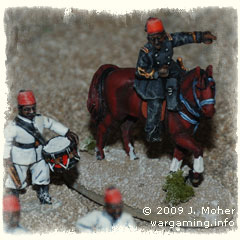
Egyptian Infantry Companies (the 4th on right as you can tell by the Yellowy-Orange Company Flag, the 3rd Company having the discoloured White Flag on left), supported by a Section of Artillery. Behind can be seen the Battalion HQ with the Colonel on horseback, and the Green Battalion Flag (of the 3rd Battalion), plus drummer and such. Battalion HQ consists of the mounted Colonel (or Bey), Battalion Senior NCO/Ensign with Standard, Battalion Musician (Drummer), and a fellahin rifleman guarding the colours completes the quartet.
My full Egyptian Infantry force consists of the Battalion HQ, 2 Fellahin rifle companies, and two supporting 6pdr artillery guns (along with 2 companies of Sudanese). All figures are Perry’s including the Krupp 6pdr Light Field Gun. The bases of these figures actually still have some minor work done to complete them (i.e. additional detailing).
Order from the Flag Dude Arrives
My order from The Flag Dude has arrived for my Colonial Troops – I’ve been keen to get this as its the first time I’ve ordered from Rick O’Brien and I was looking forward to seeing first hand what his flags are like – now I can push on and complete my units now and give them their nice new flags. I’ve also taken photos of the Flags on arrival to give people an idea of what they look like!
The following is a random selection of flags I have purchased from Rick O’Brien, the Flag Dude, for my 28mm Colonial Forces. I’ve put these up to give anyone interested a good (but quick) view of some of the flags in a higher resolution than is available on Rick’s site.
Continue reading “Order from the Flag Dude Arrives”The Russians Are Coming!
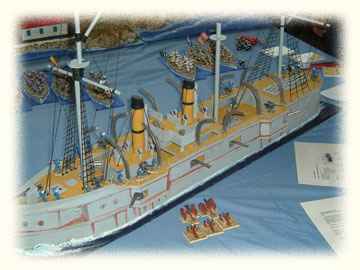
Colonial participation game at CanCon (Canberra, Australia) wins ‘best participation game’ of convention. Depicting the feared Russian invasion of Australia, and generously supported by Askari Miniatures who donated figures to promote the game, the guys involved have done a fantastic job! You can see the photos and read more at the Defence of Melbourne blog.
Fire & Sword Battle 02: The March to Wadi Halfa
Having camped but a days march from the approaches to Wadi Halfa in late September 1883, Sir Henry Frotheringham’s relief column is suddenly assaulted in the early dawn by a large Dervish Force…!
Continue reading “Fire & Sword Battle 02: The March to Wadi Halfa”